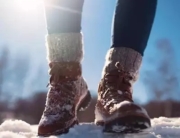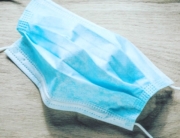Athlete’s Foot can afflict anyone, whether an actual athlete or not! Below are some tips and pearls shared by Dr. Krista Archer DPM from Brooklyn, NY.
Anyone who’s had athlete’s foot is very familiar with the symptoms: an itching, burning and/or stinging sensation accompanied by a scaly, peeling rash. Some forms of athlete’s foot can occur on the bottom and sides of your feet and may even involve blisters or sores. It’s easily spread by sharing shoes, towels or clothes, or by walking barefoot on floors that are contaminated by the fungus. It occurs most commonly in men, those who use communal pools or saunas, and people with compromised immune systems. Wearing damp socks or ill-fitting shoes can also increase your chances of getting the fungus. You can also develop the fungus on your hands if you touch your feet and neglect to wash your hands well afterward or you pick at the infected area.
Although athlete’s foot can be uncomfortable and annoying, there are a few simple steps you can take to avoid developing the fungal condition:
Make sure your feet are kept clean and dry.
Remove damp socks and change into clean, dry socks as soon as possible.
Dry thoroughly between your toes after showering or bathing, swimming or using a sauna or hot tub.
Wear rubber shower sandals while using public showers or when walking around in locker rooms or around swimming pools.
Wear socks to absorb perspiration and be sure to change into clean socks each day.
Keep your shoes off indoors and wear socks instead to allow your feet to breathe.
Make sure your shoes fit properly and do not crowd toes.
Avoid shoes made of synthetics that don’t allow your feet to breathe, such as vinyl or rubber.
Whenever possible, alternate your shoes, allowing each pair to air for 24 hours before wearing again.
Never share shoes, socks or towels.
Use anti-fungal powder between your toes and on your feet.
Keep toes extra dry by wearing absorbent lamb’s wool between them.
Wash clothes including socks and underwear in hot water and if possible, use bleach for a greater chance of killing the fungus.
After bathing or swimming, always dry your groin before drying your feet or use a separate towel for each to prevent spreading the fungus to your groin area. Put your socks on before your underwear for the same reason.
When using a medicine to treat athlete’s foot, be sure to finish the course of treatment; ending early can allow the fungus to begin growing again.
In most cases, athlete’s foot can be successfully treated with over-the-counter creams; however, the infection can recur, especially if you don’t follow the tips above. If an infection persists for several weeks after using an over-the-counter product, make an appointment with our office to learn about prescription medications that can be more effective. If you have diabetes and you notice the infected area is especially red, swollen or sore, or you have a fever or drainage from the area, call us to make sure you have proper treatment for your condition.
Remember: Athlete’s foot is very contagious, and it’s easy to become reinfected. Follow these simple guidelines and you’ll increase your chances of destroying the fungus and having healthier feet.






